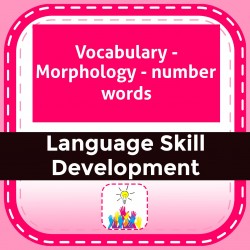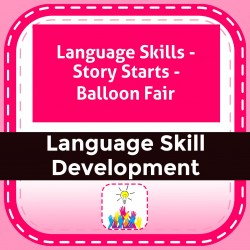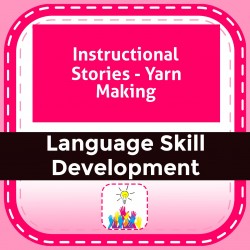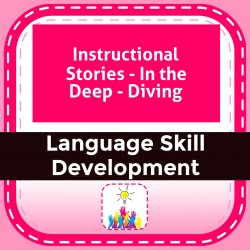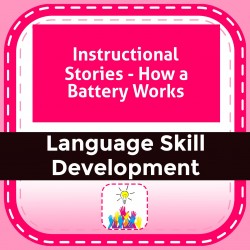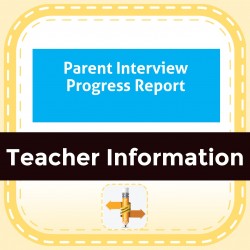Ability Levels
Categories
Resource Types
Age/Grade Range
CCSS
Anchor Standard
Speaking & Listening
Language
Reading
BUNDLE - Vocabulary - Morphology
$ 695
Morphology awareness supports a deeper understanding. Morphology looks at the Greek and Latin origin of words and how the combination of root words and affixes effect pronunciation and usage. Help stu
...
dents understand how to decode words with lessons in morphology. Includes 48 pages of materials and activities for teaching Latin and Greek roots and a review that can be used as a post-test or unit assessment.
Vocabulary - Morphology - number words
$ 295
Early math instruction teaches enumeration - the designation of a numeral for a given number. This helps with visualization of quantity when listening to a story or reading a written passage. Include
...
s fillable materials and activities for drawing numbers, answering questions, drawing numbers and critical thinking skills.
Language Skills - Story Starts - Balloon Fair
$ 2
Make writing interesting using pictures to get started. Pre-writing includes putting ideas on paper, and generating a topic sentence before writing a paragraph.
Instructional Stories - Yarn Making
$ 2
Learn about how wool is made into yarn. Includes reading passages for basic and more advanced readers with fillable comprehension question sheets.
February Writing Prompts for D/HH Students
$ 3
Writing can be challenging for students who are deaf or hard of hearing (or students with limited English language skills) for a variety of reasons. But as with anything, the more opportunities a stud
...
ent has to practice something, the easier it becomes over time.What's included:This downloadable PDF file includes 23 writing prompts for February.A variety of question types are included such as narrative, opinion, descriptive, imaginative, and informational.Most of the 23prompts are related to events and activities in February, while others are simply meant to be fun and silly. Several prompts are related specifically to hearing loss.Please note I did not include a grade level for this resource because it's meant to be used based on a student's individual writing level. However, most questions are geared around a 1-3 grade level. If you have any questions about the prompts, please post in the "Q & A" tab above and I will be happy to help.Suggested use:I use these daily with my deaf/hard-of-hearing students. They have 10 minutes to write uninterrupted. I encourage them to continue writing for the entire time, even if they think they're done sooner. When kept in a binder or folder, these entries are a phenomenal (and easy) way to clearly see their growth.After they've finished writing, we go over it together, targeting 1-2 writing elements they are working on while ignoring any other errors they may make. We use different colored markers to circle the elements (correct tenses, use of pronouns, prepositions, etc.). It's even better when they can point these out themselves. For example, I'll ask "where are the different tenses you used?". Then they point out all the tense endings and circle them in orange. Then, we look for all the pronouns they used and circle those in green, etc.I have found this a favorite way to practice writing skills with my students because it's non-intimidating and fun. students are proud to share their work and start to see themselves as writers.
Instructional Stories - In the Deep - Diving
$ 2
Learn about deep sea diving with vocabulary, reading, and comprehension activities for basic and more advanced readers. Fillable sheets include reading comprehension, note-taking practice, acronyms,
...
and vocabulary building.
Instructional Stories - How a Battery Works
$ 2
Most of our students are familiar with batteries, but do they know how batteries work? Learn about how batteries work with vocabulary, reading, and question and answer activities for basic and more
...
advanced readers.
Parent Interview Progress Report
$ 0
This checklist is designed to be part of biannual discussions and monitoring between early intervention professionals and family members of infants and toddlers with hearing loss. Family members are a
...
sked to consider the different areas that can affect the rate that communication skills develop and how often their child receives attention to each of these considerations. Areas covered are: Auditory Communication, Visual Communication, and Effective Communication Strategies.
BUNDLE - Language Skills - Story Starts
$ 1095
This BUNDLE of instructional pages has 18 worksheets of different topics to expand language use. Topics: Balloon Fair, Bentley Goes for a Ride, Blue Ribbon Pumpkin, Building a Sand Castle, Create Your
...
Own Guitar, Meet Cinder the Shop Cat, Performers on Train Platform, Santa on Summer Vacation, Science of Fireworks, Bentley Celebrates an Anniversary, Bentley Finds a Friend, Bentley Gets a Cool Treat, Bentley Gets a Special Treat, Bentley is All Grown Up, Bentley Sees a Squirrel, Silly Story Endings, Star of Groundhog Day, Wanted for Hire
Instructional Stories - Earthenware - Dishes Made of Dirt
$ 2
Learn about history by exploring how earthen ware came to be and is made today. Fillable sheets are included for vocabulary, question and answer for basic and more advanced readers.
 Your browser is out of date. For best experience switch to latest updated Browser.
Your browser is out of date. For best experience switch to latest updated Browser.
 Get Chrome
Get Chrome Get Edge
Get Edge Get Firefox
Get Firefox
